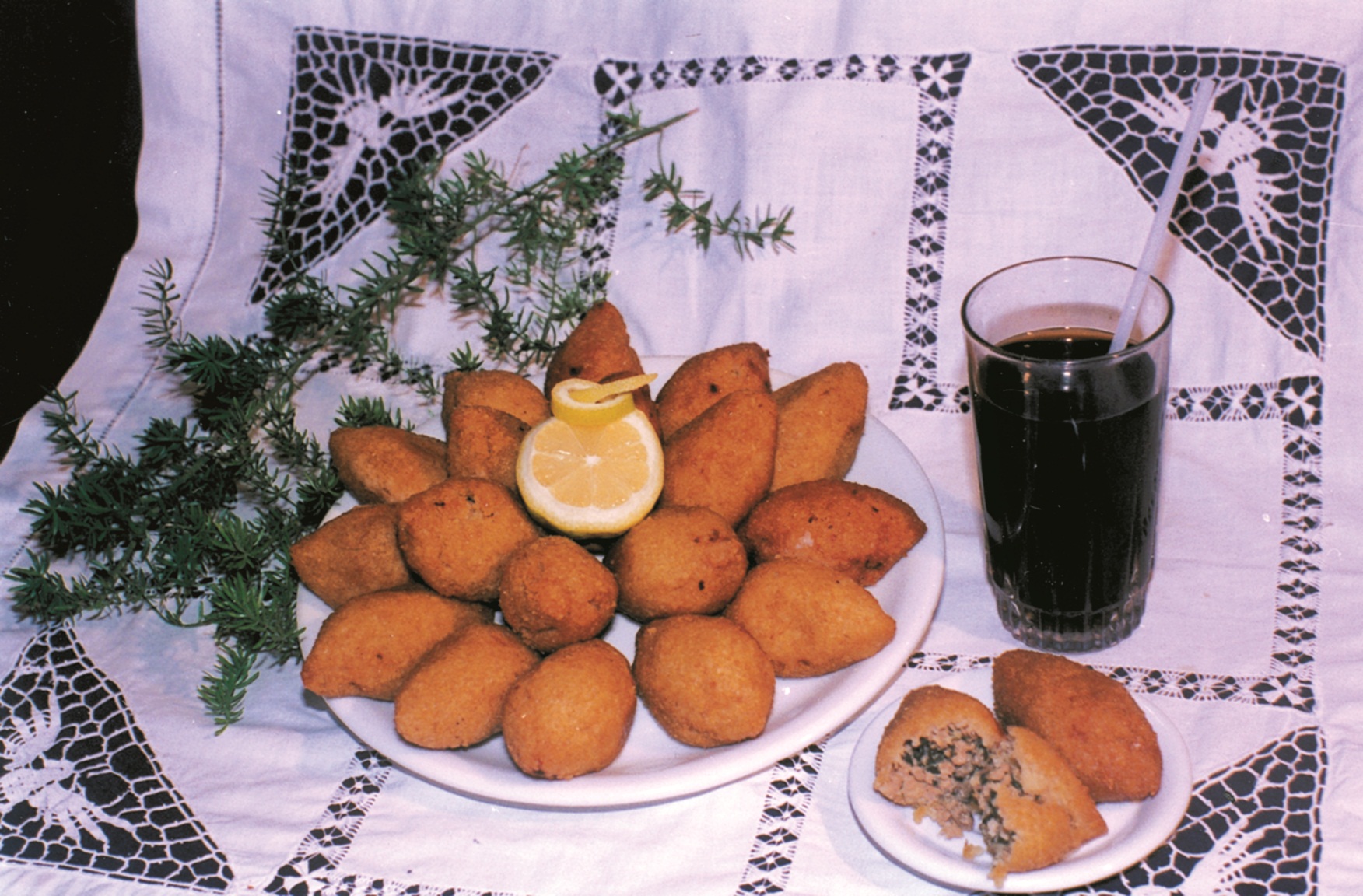Name - Origin
It is a type of Arabic bulgur-meat ball made with pounded wheat with minced meat fat (Yangoullis 2009, entry κούπα,η, 229) (minced meat), parsley, onion, spices, etc. (Yangoullis 2009, entry κούπα,η, 229; Kypri 1983 [2003²], entry κοῦπα,η, 262).
George Loukas in his Glossary notes that it is: pieces of meat encased in pounded and kneaded boiled wheat, fried in olive oil (Kypri 1979 [2002²], entry κοῦπα,η, 245).
ΕΤΥΜ. < Sanskrit kūpah [hole] (Petrou-Poeitou 2013, entry Κούπα, 68) / armenian word (Yangoullis 2009, entry κούπα,η, 229)
Same as Arabic kibbeh (Kypri 1979 [2002²], entry κοῦπα,η, 245) and Turkish bulgurlu köfte (Yangoullis 2009, entry κούπα,η, 229).
They would knead bulgur wheat with water and make ellipsoidal cylinders of 8-12cm long, which they would half-fill with fried minced meat to which they would add chopped onion and parsley. They were fried in oil (Kypri 1983 [2003²], entry κοῦπα,η, 262).
Functional and symbolic role
In the past, Ottoman street vendors used to prepare and sell them every morning and afternoon for 1⁄4-piastre or for half a piastre, if they were larger (Kypri 1983 [2003²], entry κοῦπα,η, 262).
Additional information and bibliography
Yangoullis K. G. (2009), Θησαυρός Κυπριακής Διαλέκτου. Ερμηνευτικό, Ετυμολογικό, Φρασεολογικό και Ονοματολογικό Λεξικό της Μεσαιωνικής και Νεότερης Κυπριακής Διαλέκτου, Βιβλιοθήκη Κυπρίων Λαϊκών Ποιητών, 70, Theopress Publications, Nicosia.
Kypri Th. D. (ed.) (1979 [2002²]), Υλικά διά την σύνταξιν ιστορικού λεξικού της κυπριακής διαλέκτου, Μέρος Α΄, Γλωσσάριον Γεωργίου Λουκά, Publications of the Centre for Scientific Research, XLI, Nicosia.
Kypri Th. D. (ed.) (1983 [2003²]), Υλικά διά την σύνταξιν ιστορικού λεξικού της κυπριακής διαλέκτου, Μέρος Β΄, Γλωσσάριον Ξενοφώντος Π. Φαρμακίδου, Publications of the Centre for Scientific Research, IX, Nicosia.
Petrou-Poeitou E. (2013), Από πού κρατάει η σκούφια τους. Λέξεις και ιστορίες από τον κόσμο της γεύσης, Epiphaniou Publications, Nicosia.
Stalo Lazarou, Tonia Ioakim, Argyro Xenophontos
